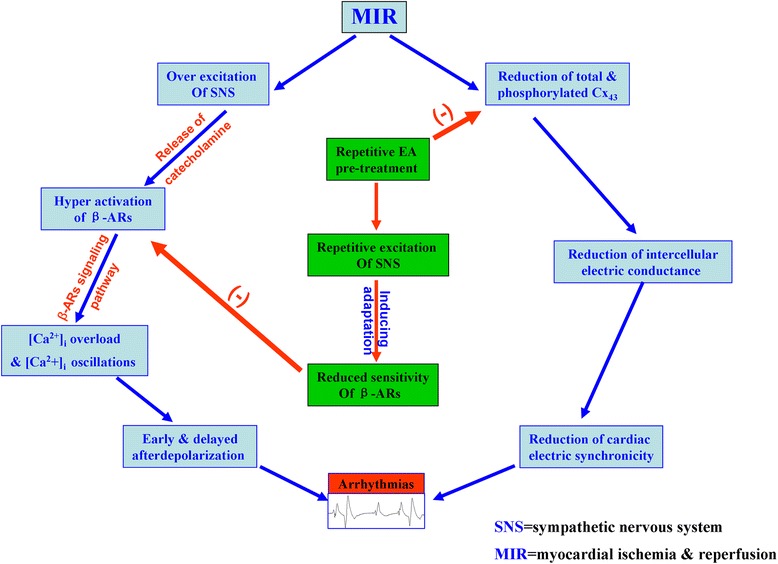Figure 5.

Hypothetical diagram showing the possible targeted points mediating the anti-arrhythmic effect of EA pretreatment. During MIR both sympathetic nervous system (SNS) and β-adrenoceptors (β-AR) were over excited, which leads to intracellular calcium ([Ca2+]i) overload and [Ca2+]i oscillations; in addition, MIR also causes the reduction of total and phosphorylated Cx43, which subsequently attenuates the intercellular electric conductance and the cardiac electric synchronicity. Both the reduction of cardiac electric synchronicity and enhancement of [Ca2+]i oscillations which is known to be related to early and delayed afterdepolarization can result in cardiac arrhythmias. On the one hand, repetitive electro-acupuncture (EA) pretreatment may finally produce the anti-arrhythmic effect via inducing an adaptation of β-AR to the stimulation of catecholamine released from the terminals of SNS, and bringing about the inhibition of both [Ca2+]i overload and [Ca2+]i oscillations; on the other hand, EA pretreatment may also inhibit the MIR-induced reduction of total or phosphorylated Cx43, which consequently enhances the cardiac electric synchronicity and then diminishes the occurrence of arrhythmias.
